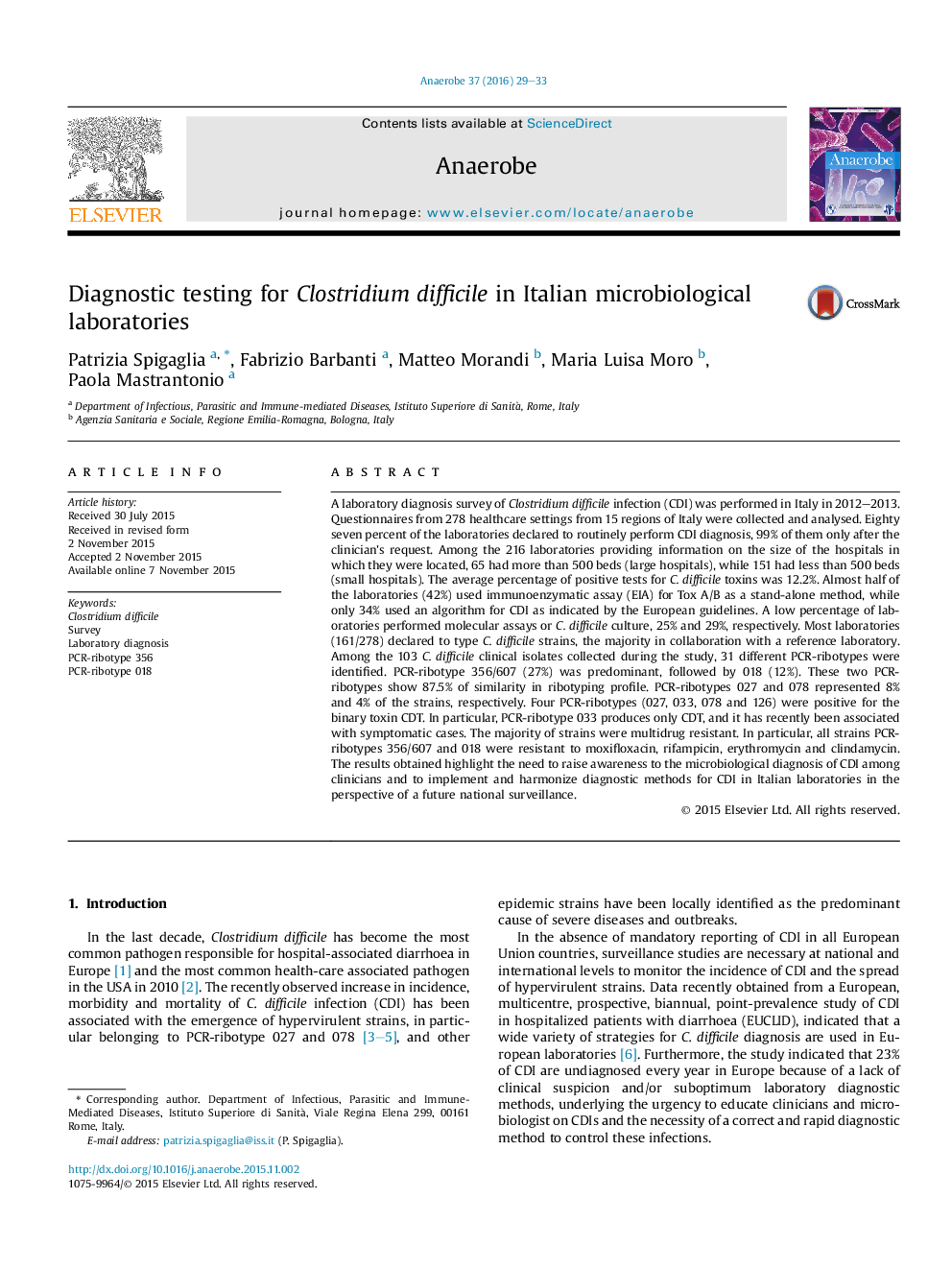| کد مقاله | کد نشریه | سال انتشار | مقاله انگلیسی | نسخه تمام متن |
|---|---|---|---|---|
| 3394993 | 1592827 | 2016 | 5 صفحه PDF | دانلود رایگان |

• First laboratory diagnosis survey of Clostridium difficile infection (CDI) performed in Italy.
• Eighty seven percent of the laboratories declared to routinely perform CDI diagnosis, 99% of them after clinician's request.
• 42% laboratories used EIA for Tox A/B as a stand-alone test, 25% molecular assays and 29% C. difficile culture.
• Only 34% of laboratories used an algorithm for CDI as indicated by the European guideline.
• The predominant PCR-ribotype detected was 356/607 (27%), followed by 018 (12%). PCR-ribotype 027 and 078 are emerging.
A laboratory diagnosis survey of Clostridium difficile infection (CDI) was performed in Italy in 2012–2013. Questionnaires from 278 healthcare settings from 15 regions of Italy were collected and analysed. Eighty seven percent of the laboratories declared to routinely perform CDI diagnosis, 99% of them only after the clinician's request. Among the 216 laboratories providing information on the size of the hospitals in which they were located, 65 had more than 500 beds (large hospitals), while 151 had less than 500 beds (small hospitals). The average percentage of positive tests for C. difficile toxins was 12.2%. Almost half of the laboratories (42%) used immunoenzymatic assay (EIA) for Tox A/B as a stand-alone method, while only 34% used an algorithm for CDI as indicated by the European guidelines. A low percentage of laboratories performed molecular assays or C. difficile culture, 25% and 29%, respectively. Most laboratories (161/278) declared to type C. difficile strains, the majority in collaboration with a reference laboratory. Among the 103 C. difficile clinical isolates collected during the study, 31 different PCR-ribotypes were identified. PCR-ribotype 356/607 (27%) was predominant, followed by 018 (12%). These two PCR-ribotypes show 87.5% of similarity in ribotyping profile. PCR-ribotypes 027 and 078 represented 8% and 4% of the strains, respectively. Four PCR-ribotypes (027, 033, 078 and 126) were positive for the binary toxin CDT. In particular, PCR-ribotype 033 produces only CDT, and it has recently been associated with symptomatic cases. The majority of strains were multidrug resistant. In particular, all strains PCR-ribotypes 356/607 and 018 were resistant to moxifloxacin, rifampicin, erythromycin and clindamycin. The results obtained highlight the need to raise awareness to the microbiological diagnosis of CDI among clinicians and to implement and harmonize diagnostic methods for CDI in Italian laboratories in the perspective of a future national surveillance.
Journal: Anaerobe - Volume 37, February 2016, Pages 29–33